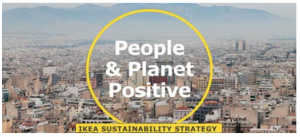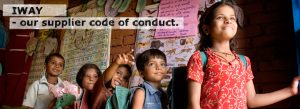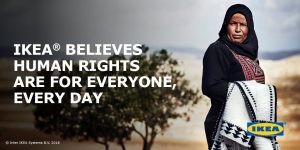In 1994, IKEA was defied with incriminations that some of their carpets may have been produced using child labor. Their reaction to these accusations was rapid and robust: they rewrote its purchasing contracts with all their suppliers around the world acknowledging them that IKEA was not using child labor. Notwithstanding the complex management of the child labor challenge and the subsequent bad publicity, the corporation never contemplated pulling out. Through IKEA’s commitment with this issue over the years, the company became convinced that simple-minded Western world solutions – such as boycotts, contract terminations or trade sanctions – would not lead to the abolition of child labor – which now IKEA considers it an embedded problem born out of poverty, poor health and education, social norms and indebtedness.

IKEA’s philosophy resulted in the implementation of several programs: they committed to UNICEF by funding development projects for the areas in which their supply chain is allocated and, as well as that, in 2000 IKEA formalized all the practices and policies in a corporate code of conduct: “The IKEA Way on Purchasing Home Furnishing Products (IWAY)”. IWAY fixed the company’s expectations regarding their providers in terms of working conditions –accentuating child labor requirements– and environmental responsibilities. IKEA enforces IWAY by auditing and guidance and only after repeated cycles of non-compliance, the relationship terminates.

IKEA advocated for “being legitimate instead of legal” and truly aims to change the rules of the game regarding their industry and supply chain by going beyond business practices and transforming community mind-sets. However, journalists call for fast and straightforward reactions and answers when the company states that they still have not completely resolved the problem existing since 1994 regarding their supply chain. No matter how much time IKEA spends in explaining the media the complexities of the topic and their long-term systematic solutions, sensationalized and untrue reports are continuously published as a result of the hotness of the affair -child labor- and the high visibility of IKEA.

This case made me wonder on which type of marketing campaign does IKEA need in order to make their public understand their approach, comprehend the complexity of IKEA’s ethical but controversial approach and make them less vulnerable to over-simplistic media reporting. To run away from green-washing perceptions IKEA needs: to heavily communicate with transparency all their practices, to search for independent verification of their claims and to encourage consumers to act by including in their brand image bigger sustainable issues, in this case, their treatment of the child labor challenge.
Some initiatives could be: explanatory videos posted in IKEA’s social media, open educational events or conferences, collaborations well-known institutions as Save the Children and UNESCO by jointly communicating their work together to construct even a stronger moral brand image…

Hello Nuria,
I never though IKEA would be this sustainable. Ive actually been to IKEA once in my life, and I though of it as an unsustainable company. I previously thought that their supply chain wasn’t the most sustainable, that they overpackaged everything, and that they basically did everything to cut costs. My perception of IKEA discouraged me to buy more furniture from there. I really think that they should show more their initiatives so people like me buy more from them. They should release sustainability reports and be, how you said, as transparent as they can. Communication is key and they should work more on that.
Fede VZ